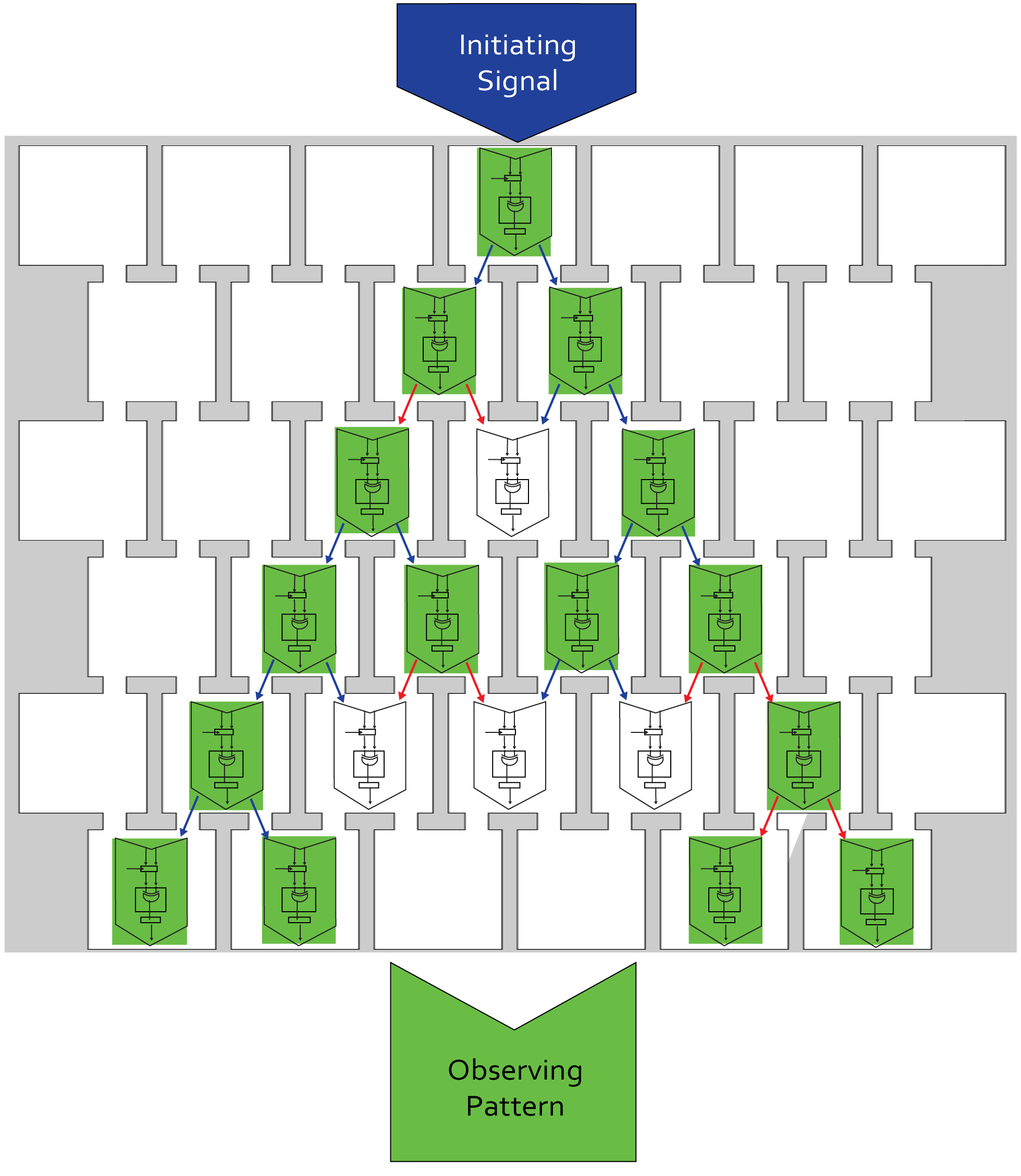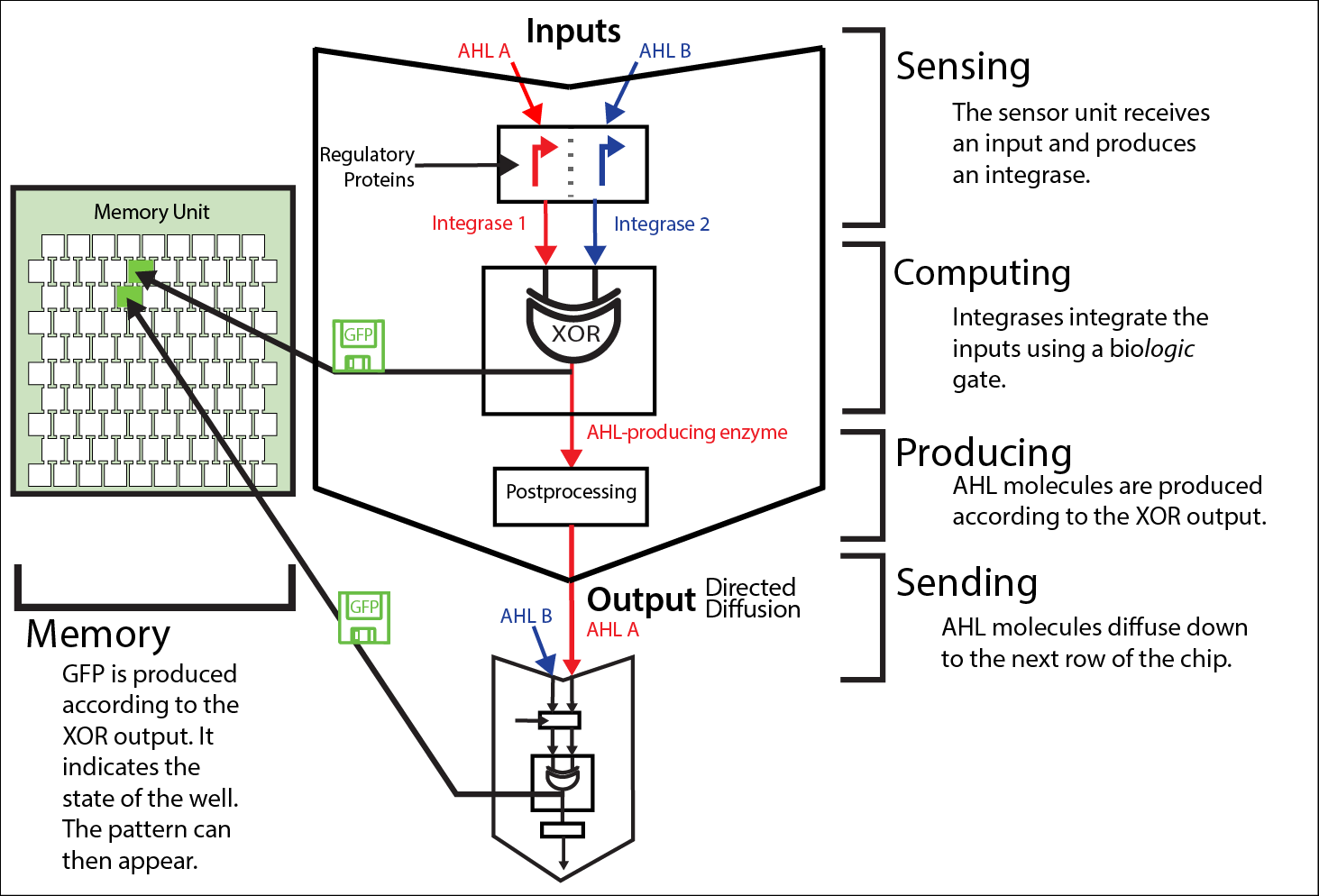Team:ETH Zurich/project/infopro
From 2014.igem.org
Information Processing
Information Processing
About the track
Why we chose this track
The goal: Pattern emergence via information processing
We implement a cellular automaton in bacterial colonies. Each bacterial colony is a core, computing an XOR gate. A sensor device detects the inputs, HSL molecules. Then, the cell integrates the signal through a logic gate, performed by proteins, the serine integrases. A necessary post processing step generates the production of HSL molecules. Meanwhile, GFP, a visual read out, longlastingly indicates the state of the well. The produced signal then propagates in a directive fashion through a millifluidic chip. This iterative process faces the challenges of leakiness, cross-talk, protein-level computation and diffusion.
Sensing
Diffused HSL molecules are identified via quorum sensing machinery. The transfer function between concentration of sensed HSL to promoter activation deviates from the ideal one due to leakiness and crosstalk between HSL molecules, regulatory proteins and promoters (we characterized it for [http://parts.igem.org/Part:BBa_R0062 Lux promoter (BBa_R0062)], [http://parts.igem.org/Part:BBa_R0079 Las promoter (BBa_R0079)] and [http://parts.igem.org/Part:BBa_R0071 Rhl promoter (BBa_R0071)]). To limit the risk of error propagation, we implemented a [http://parts.igem.org/Part:BBa_K1541000 riboregulated system].
Computing
Integrases compute an XOR logic gate via single switching or double switching of a terminator. Their behavior depends on a set of parameters.
Producing
To propagate the computation results, the output has to be translated again into a quorum sensing molecule. Therefore a synthase is expressed to produce a new AHL signal.
Memorising
Alongside the AHL synthase, GFP is produced according to the XOR output. Th fluorescent protein acts both as long term memory for the colony state and as visual signal, storing and showing the progressive pattern formation.
Sending
The produced AHL diffuses through the channels to the rows below, becoming the input of the following layer. The speed of this directed diffusion determines the time needed from the pattern to emerge. You can find out more information about diffusion and chip design on our modeling page, our experimental results page and our chip page.

 "
"














